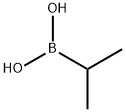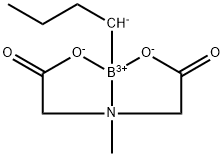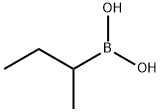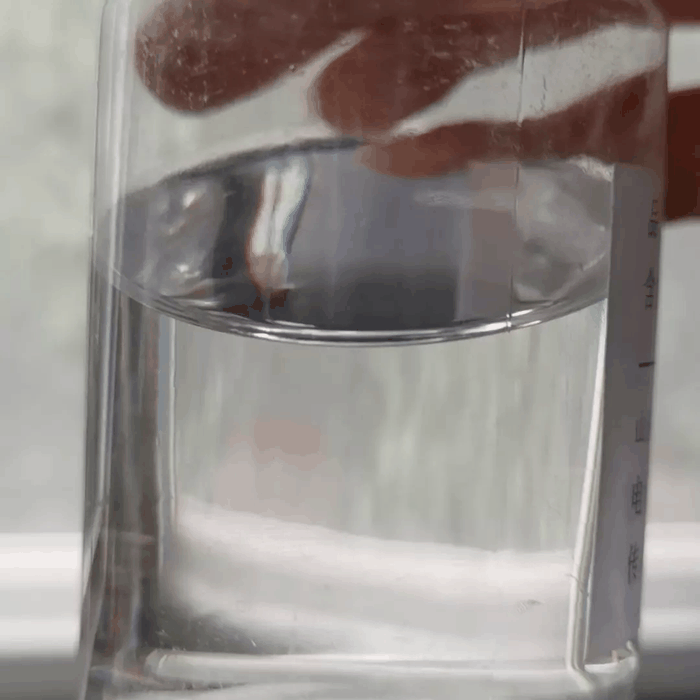Butylbenzene
Synonym(s):1-Phenylbutane;Butylbenzene;Butylbenzene solution
- CAS NO.:104-51-8
- Empirical Formula: C10H14
- Molecular Weight: 134.22
- MDL number: MFCD00009463
- EINECS: 203-209-7
- SAFETY DATA SHEET (SDS)
- Update Date: 2025-09-25 17:15:13

What is Butylbenzene?
Chemical properties
colourless liquid
Physical properties
Clear, colorless, liquid with a faint petroleum or gasoline-like odor similar to that of npropylbenzene. Nagata and Takeuchi (1990) reported an odor threshold concentration 8.5 ppbv.
The Uses of Butylbenzene
Butylbenzene is used in the preparation of butyl-silica hybrid monolithic column.
The Uses of Butylbenzene
n-Butylbenzene is an organic solvent that has been used to induce cell death in vitro and for bioconversion.
The Uses of Butylbenzene
Butylbenzene undergoes oxidation to afford butyrophenone. It is used to prepare N-arylazoles via oxidant-free and selective C(sp2)-H amination reaction. It can be used in the synthesis of alkylated pentacene and ladder-type oligo(p-phenylene)s to improve solubility in common organic solvents.
What are the applications of Application
Butylbenzene is an organic solvent for cell death in vitro induction and for bioconversion
Definition
ChEBI: An alkylbenzene that is benzene substituted by a butyl group at position 1.
Synthesis Reference(s)
The Journal of Organic Chemistry, 50, p. 1749, 1985 DOI: 10.1021/jo00210a035
Tetrahedron Letters, 21, p. 87, 1980 DOI: 10.1016/S0040-4039(00)93631-1
General Description
A colorless liquid. Less dense than water and insoluble in water. Flash point between 75 - 140°F. Used to make plastics and as a solvent.
Air & Water Reactions
Highly flammable. Insoluble in water.
Reactivity Profile
Vigorous reactions, sometimes amounting to explosions, can result from the contact between aromatic hydrocarbons, such as BUTYL BENZENE, and strong oxidizing agents. They can react exothermically with bases and with diazo compounds. Substitution at the benzene nucleus occurs by halogenation (acid catalyst), nitration, sulfonation, and the Friedel-Crafts reaction.
Hazard
Toxic by ingestion.
Health Hazard
Inhalation or contact with material may irritate or burn skin and eyes. Fire may produce irritating, corrosive and/or toxic gases. Vapors may cause dizziness or suffocation. Runoff from fire control or dilution water may cause pollution.
Safety Profile
Mildly toxic by ingestion. Flammable when exposed to heat or flame. To fight fire, use alcohol foam, CO2, dry chemical. Incompatible with oxidizing materials. When heated to decomposition it emits acrid and irritating fumes.
Source
No MCLGs or MCLs have been proposed (U.S. EPA, 1996).
Evaporation and/or dissolution of gasoline, naphtha, coal tar, and asphalt.
Identified as one of 140 volatile constituents in used soybean oils collected from a processing
plant that fried various beef, chicken, and veal products (Takeoka et al., 1996).
Purification Methods
Distil butylbenzene from sodium. Wash it with small portions of conc H2SO4 until the acid is no longer coloured, then with water and aqueous Na2CO3. Dry it ( MgSO4), and distil it twice from Na, collecting the middle fraction [Vogel J Chem Soc 607 1948]. [Beilstein 5 IV 1033.]
Properties of Butylbenzene
| Melting point: | -88 °C |
| Boiling point: | 183 °C(lit.) |
| Density | 0.86 g/mL at 25 °C(lit.) |
| vapor density | >1 (vs air) |
| vapor pressure | 1.03 mm Hg ( 23 °C) |
| refractive index | n |
| Flash point: | 139 °F |
| storage temp. | 2-8°C |
| solubility | 11.8mg/l |
| form | Liquid |
| pka | >14 (Schwarzenbach et al., 1993) |
| color | Clear colorless |
| explosive limit | 0.8-5.8%(V) |
| Odor Threshold | 0.0085ppm |
| Water Solubility | INSOLUBLE |
| Merck | 14,1549 |
| BRN | 1903395 |
| Henry's Law Constant | 12.7 at 45.00 °C, 14.1 at 50.00 °C, 15.7 at 55.00 °C, 17.3 at 60.00 °C, 18.9 at 65.00 °C, 22.2 at
70.00 °C, 26.1 at 80.00 °C (static headspace-GC, Park et al., 2004) |
| Dielectric constant | 2.4(20℃) |
| Stability: | Stable. Flammable. Incompatible with strong oxidizing agents. |
| CAS DataBase Reference | 104-51-8(CAS DataBase Reference) |
| NIST Chemistry Reference | Benzene, butyl-(104-51-8) |
| EPA Substance Registry System | n-Butylbenzene (104-51-8) |
Safety information for Butylbenzene
| Signal word | Warning |
| Pictogram(s) |
 Flame Flammables GHS02 |
| GHS Hazard Statements |
H226:Flammable liquids |
| Precautionary Statement Codes |
P210:Keep away from heat/sparks/open flames/hot surfaces. — No smoking. P370+P378:In case of fire: Use … for extinction. |
Computed Descriptors for Butylbenzene
| InChIKey | OCKPCBLVNKHBMX-UHFFFAOYSA-N |
Butylbenzene manufacturer
New Products
Indole Methyl Resin tert-butyl 9-methoxy-3-azaspiro[5.5]undecane-3-carboxylate Boc-His(Boc)-OH 2-CTC Resin 4-Chloro-7-tosy1-7Hpyrrolo[2,3-d]pyrimidine 5,7-Dibromo-1H-indole 2,5-dichloro-N-hydroxy-4,6-dimethylpyridine-3-carboximidamide 2,2-Dimethoxy-7-azaspiro[3.5]nonane hydrochloride 4-chloromethyl-5-methyl-1,3-dioxol-2-one (DMDO-Cl) R-2-BENZYLOXY PROPIONIC ACID 1,1’-CARBONYLDIIMIDAZOLE 1,1’-CARBONYLDI (1,2-4 TRIAZOLE) N-METHYL INDAZOLE-3-CARBOXYLIC ACID 4-((2-hydroxyethyl)thio)benzoic acid 1-(TERT-BUTOXYCARBONYL)-2-PYRROLIDINONE Methyl 6-methylnicotinate 3-Pyridineacrylic acid tert-Butyl carbazate TETRAHYDRO-2H-PYRAN-3-OL 2-((4-morpholinophenylamino) (methylthio) methylene) malononitrile 3-(4-morpholinophenylamino)-5-amino-1H-pyrazole-4-carbonitrile 2,4-dihydroxybenzaldehyde 1,3-Diethyl-1,3-Diphenylurea Methyl 2-methylquinoline-6-carboxylateRelated products of tetrahydrofuran








You may like
-
 n-Butylbenzene 98%View Details
n-Butylbenzene 98%View Details -
 Butylbenzene CAS 104-51-8View Details
Butylbenzene CAS 104-51-8View Details
104-51-8 -
 Butylbenzene CAS 104-51-8View Details
Butylbenzene CAS 104-51-8View Details
104-51-8 -
 Butylbenzene CAS 104-51-8View Details
Butylbenzene CAS 104-51-8View Details
104-51-8 -
 Butylbenzene CAS 104-51-8View Details
Butylbenzene CAS 104-51-8View Details
104-51-8 -
 Normal Butyl Benzene 98+View Details
Normal Butyl Benzene 98+View Details
104-51-8 -
 Pyridine 99.5% HPLC /UV SpectroscopyView Details
Pyridine 99.5% HPLC /UV SpectroscopyView Details
110-86-1 -
 Thiourea 99% ARView Details
Thiourea 99% ARView Details
62-56-6
